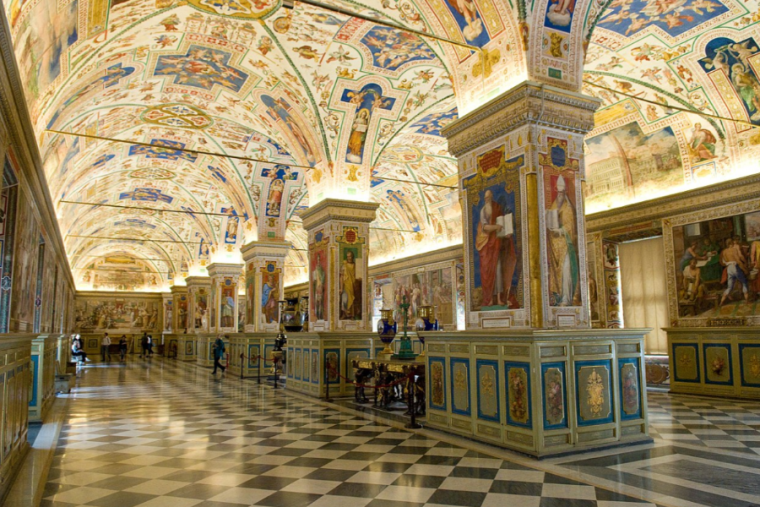The Sistine Hall of the Vatican Library. Credit: Michal Osmenda (CC BY-SA 2.0).
A revamped website for the Vatican Apostolic Library brings modern technology to the study of historic manuscripts.
The new website, with improved search functions and easier access to digital reproductions of documents, went live in mid-July.
“We are the pope’s librarians because the library is his and has been open by his desire for many centuries,” Msgr. Cesare Pasini, library prefect, told Vatican News. “So we want to be truly at the service of our visitors with a modern and current tool that immediately provides what one is looking for.”
He noted that “graphics evolve quickly in this type of digital communication and therefore we have long been aware that something fresher, more agile and more intuitive was needed.”
The redesign was in the works for a while, Pasini said, but the update comes at a time when physical access to the library’s collections is more difficult due to coronavirus restrictions.
“Especially in the period of health emergency that we are experiencing, in which the mobility of people is limited and it is more difficult for many to come directly to the Library, this open and communicative site, rich and captivating, wants to be an important place for welcoming, collaboration and openness,” he stated.
The website of the papal library gives researchers and students free access to high-resolution digitized manuscripts, inventories, archival materials, coins, medals, and incunabula, which are books printed in Europe before the 16th century.
Any visitor to the website, not only scholars, can browse manuscripts and other parts of the collection.
Pasini said that many people first “enter” the apostolic library via its website, “so this must be the first service he finds, these must be the first beautiful things he can look at, to be curious about, to research.”
Someone looking for something specific, Pasini said, “can still indulge in these thousand cultures, thousand languages that we have in our treasures in the library, [in the] historic languages of the world.”
In a registered area of the website, researchers can submit questions to library staff, use a more advanced search function, and submit requests for photographic reproductions of documents.
The modern iteration of the Vatican Apostolic Library is believed to have begun in the 14th century, though there is evidence that the Catholic Church has preserved a library and archive from as early as the 4th century.
A papal bull in 1475 opened the library and archive to study by scholars. Archival material was formally separated from the library in the early 17th century and entrusted to the Vatican Secret Archives.
The building which still houses the library today was built in the latter part of the 16th century.
According to its website, today the Vatican library “preserves over 180,000 manuscripts (including archival units), 1,600,000 printed books, about 9,000 incunabula, over 300,000 coins and medals, more than 150,000 prints, thousands of drawings and engravings and over 200,000 photographs.”
The library is closed for the summer period, but will reopen to qualified researchers in mid-September.
Source: CNA

